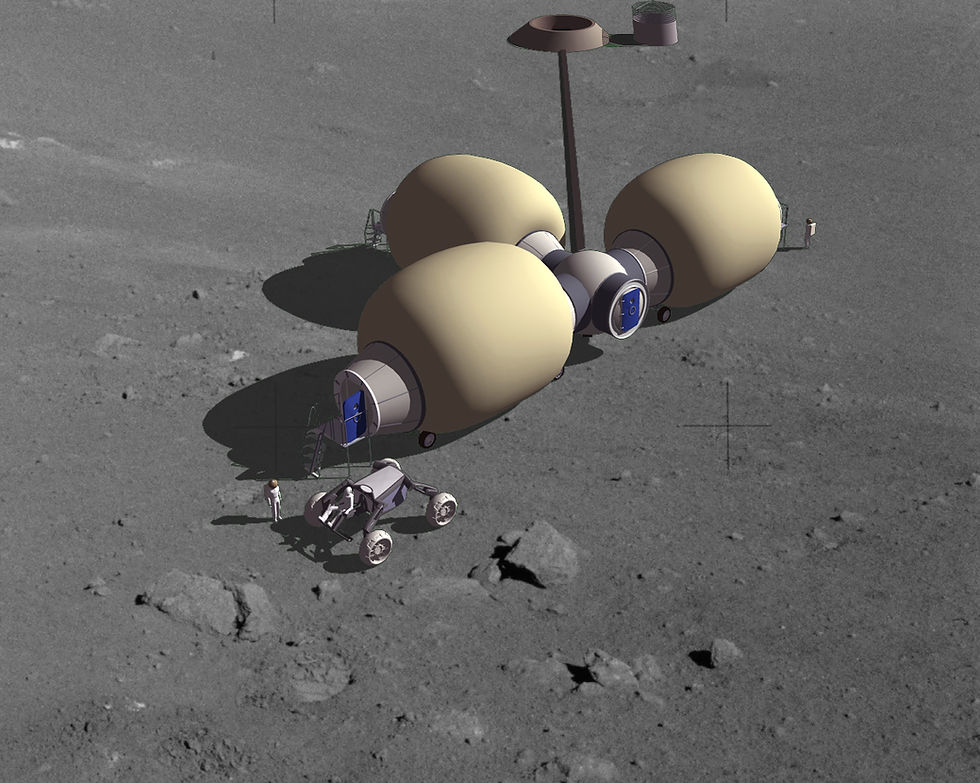
SEIM: Surface EndoSkeleton Inflatable Module
In the period between mid-1997 and 2000, a team at NASA's Johnson Space Center disrupted historical paradigms by developing the first endoskeletal space module. The value of this design was cost-effectiveness and efficiency, and also the possibilities its technical success has created for new forms to support human-rated vehicles and modules for exploration missions.
SEIM is a complex, semi-inflatable vehicle whose two basic configurations—launch and deployed–are each optimized for their respective environments while retaining fundamental system integration for autonomy and efficient deployment. An early lesson of this new paradigm is its adaptability to a wide array of formal solutions for different sets of requirements. In this second formal study of adapting the paradigm, the architecture team has undertaken the challenge of designing a module whose operations concept is similar to that of the habitation module, but operating in a different environment—that of a planetary surface. This typology is another fundamental element of the critical path for human exploration: the surface habitat.
The surface habitat requirements for a lunar or Mars expedition include the ability to launch, deliver and deploy the module and subsequently to support positive and efficient operations for a period of up to two years.
Cost-effective responses to issues of propulsion, assembly method, environmental shielding and surface access are major design drivers. A set of requirements for the SEIM design includes the following:
-
ability to launch on a single flight of a number of large-size operational launch platform (e.g., Falcon Heavy, Ariane 5)
-
ability to activate and inflate autonomously on the destination body's surface
-
support of main systems via pre-integrated elements; passive and active bulkheads to enable flexibility of docking configuration; integrated airlock element
-
reconfigurability
-
accommodation of at least 80 square meters of full-height area (min. 2.15m) for public and/or private use.








